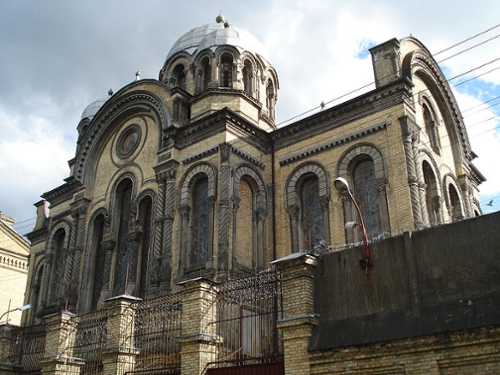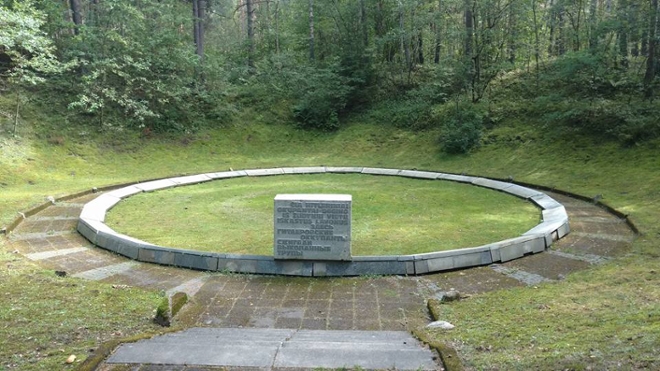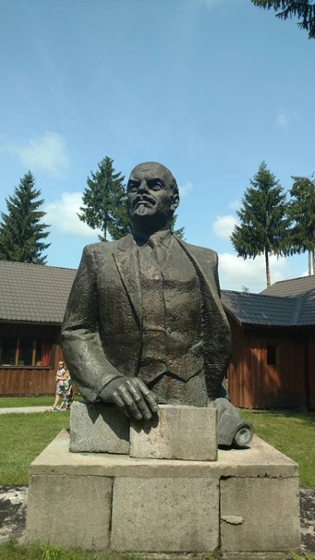Week 8: Visiting Lithuania’s Most Famous Prison
This past week I had the rare opportunity to tour Lukiškės Prison in the center of Vilnius. The prison is in an unusual location, in that it is located right next to the Seimas Palace, the Lithuanian Parliament. It is the only prison in Europe located in the center of a capital, though it is scheduled for relocation in 2018 from the area where it has stood since 1905. It also has the distinction of being the only high security prison in Lithuania, with the rest of Lithuania’s inmates serving their sentences in open prisons with minimal supervision, no cells, and limited security. Lukiškės Prison, on the other hand, is used to hold Lithuania’s worst criminals - nearly 100 prisoners are serving life sentences there, 15 of whom are women. It is also used to hold detainees who are awaiting trial, which make up the majority of those housed in the facility. Several days after our tour, my Lithuanian associate told me that she was having sad flashbacks to the conditions in the prison, but I admit that the conditions seemed better than American prisons I’ve visited or read about. She seemed shocked when I mentioned that cigarettes are forbidden in American prisons and are a major contraband good - in Lukiškės prisoners buy cigarettes from the commissary. The prison holds concerts and other events for inmates on a regular basis, and prisoners spend much of their time engaged in arts and crafts (I was blown away by some of the prisoners’ skills at painting and woodworking). The yard had a garden and local art students had painted happy murals on the walls.

This is certainly not to say that everything at the prison was comfortable for the inmates. Lukiškės has had a serious problem with overcrowding in the past. The cells were small and very bare, and the panopticon required a net to prevent suicides. There is also the possibility that I was given a positive spin by the prison guard who was showing me around, who testified to me that the prison has very little violence or contraband outside of the occasional mobile phone. He also claimed that prisoners get ample time out of their cells and that solitary confinement is rarely used. I did not get the opportunity to talk to any prisoners to determine how they felt about prison conditions, but it is fairly common for prisoners to lobby formal complaints about these conditions. The general remedy for these complaints is to appease the prisoners with compensatory monetary damages, as opposed to the injunctions that typically issue in the U.S., but the guard said that this practice was becoming less common.
Then there is the sad history of the prison. In 1941 during the Nazi Occupation of Lithuania, the Gestapo used the prison as a holding cell for thousands of Jews and members of the Polish Resistance. Most of these were transported to Ponary, present day Paneriai, just south of Vilnius. There, more than 100,000 Jews, Poles, and POWs were killed by the Nazis and buried in mass graves. I visited the memorial there this past weekend, which was a place of both immense natural beauty and a somber reminder of the depths of human cruelty. Vilnius was once known as the Jerusalem of the north. Today, one synagogue remains in operation, as more than 90% of Lithuania’s Jewish population were murdered during the Holocaust. After the Nazis began to lose ground to the Soviets near the end of the War, they attempted to exhume the corpses and burn them to cover up their crimes, forcing Lithuanians to do so. The guide told the story of one man on the “burning brigade” who recognized his wife’s body by a medallion he gave her. Many of those hired to burn bodies dug a tunnel and escaped, a tunnel that was only recently discovered by a team of archaeologists from Lithuania, Israel, and the United States.

I also visited Grūtas Park, unofficially known as Stalin World, though I think Lenin World would have been more appropriate given the literally hundreds of depictions of the Bolshevik leader. When the Soviet Occupation ended, most of the Soviet statues were torn down and were to be destroyed. Instead, a Lithuanian entrepreneur stepped in and purchased many of them for his private collection, opening up this eclectic theme park, complete with guard towers and barbed wire fences that were reminiscent of Soviet Gulags. These features were in stark contrast to the children’s playground equipment and the small zoo that were also part of the park, as llamas frolicked alongside statues of Lenin and Felix Dzerzhinsky, the organizer of the Red Scare. It was an interesting experience to say the least.

From there I went to the nearby spa town of Druskininkai, where I enjoyed a concert of music written by M.K. Čiurlionis, composer, writer, and painter, and the most famous of Lithuanian artists. This week I am working on a new project, related to the training of judges and prosecutors on EU surveillance laws, which I will tell more about in my next post. Also, my mom is visiting tomorrow and we are taking the short flight to Rome this weekend!